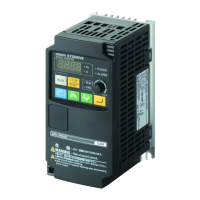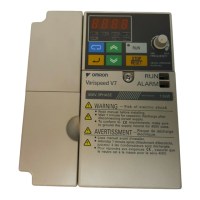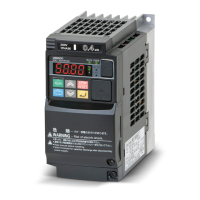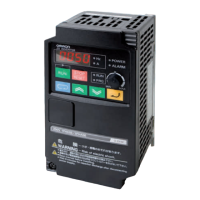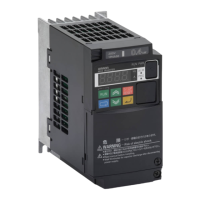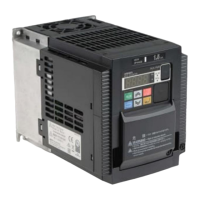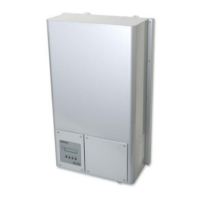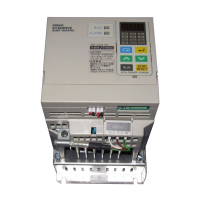Appendices A Technical Information
A - 28
High-function General-purpose Inverter RX2 Series User’s Manual
Detailed Braking Resistor Selection
Calculation of Required Braking Resistance
Calculation of average regenerative energy
Max. rotation speed N [r/min]
The energy is proportional to the square of the
speed. The regenerative energy momentarily
becomes the largest at this point.
Max. deceleration torque T
[N·m]
If the motor rotation direction and the
motor torque direction are different, the
regenerative energy will be produced.
V
T
Tm
N
: 200-V class inverter
362.5 [V]
400-V class inverter 725 [V]
:
Maximum braking torque [N·m]
: Motor rating torque [N·m]
: Maximum rotation speed
[r/min]
Resistance of braking resistor: R ≤
Time
Torque
Speed
Period 1
Period 1
Period 2
Period 2
Period 3
For horizontal load
For vertical load
Average regenerative energy [W] =
1 cycle time [s]
When the usage rate of the braking resistor selected on
the previous page exceeds 10% ED, or when an
extremely large braking torque is required, use the
method below to calculate a regenerative energy and
make your selection.
Select a braking resistor from the required braking resistance
and the average regenerative energy on the left.
• Required braking resistance ≥ Resistance of braking
resistor ≥ Min. connection resistance of inverter or
regenerative braking unit
• Average regenerative energy ≤ Resistance capacity of
braking resistor
1. Connecting a braking resistor whose resistance is less than the
minimum connection resistance value of the inverter or regenerative
braking unit results in damage to the internal braking transistor. If the
required braking resistance is less than the minimum connection
resistance, change the inverter or regenerative braking unit to one
having a larger capacity and ensure that the required braking
resistance is not less than the minimum connection resistance.
2. Two or more regenerative braking units can be connected in parallel.
Refer to the following formula to know the braking resistance value in
such a case: Braking resistance [] = (Required braking resistance
calculated as above) x (No. of units)
3. Make allowance for the resistance capacity of the braking resistor.
Select a braking resistor whose capacity is at least 20% larger than
the calculated value. Otherwise, it may be overheated.
Regenerative energy is produced when the motor
rotation direction and the torque direction are opposite.
Use the following formula to calculate the regenerative
energy for each period in a cycle.
Note: Calculate a braking torque according to Inverter Capacity Selection in
the Motor Capacity Selection section.
Time
Torque
Speed
Time
Torque
Speed
P
: Regenerative energy in Period
1 [J]
N: Motor rotation speed [r/min]
When the number of rotations
changes, take an average
value.
For linear deceleration
(N max+N min)/2
T:
Deceleration torque [N·m]
t: Deceleration time [s]
• For the average regenerative
energy, calculate the time
average by adding the
regenerative energy for all
periods in a cycle and dividing it
by the cycle time, as shown
below.
1. For Speed, the forward rotation direction is indicated as
positive. For Torque, the torque in the forward rotation direction
is indicated as positive.
2. Calculate a braking torque according to Inverter Capacity
Selection in the Motor Capacity Selection section.
Note)
Note)
Braking Resistor Selection
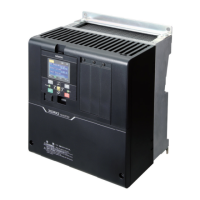
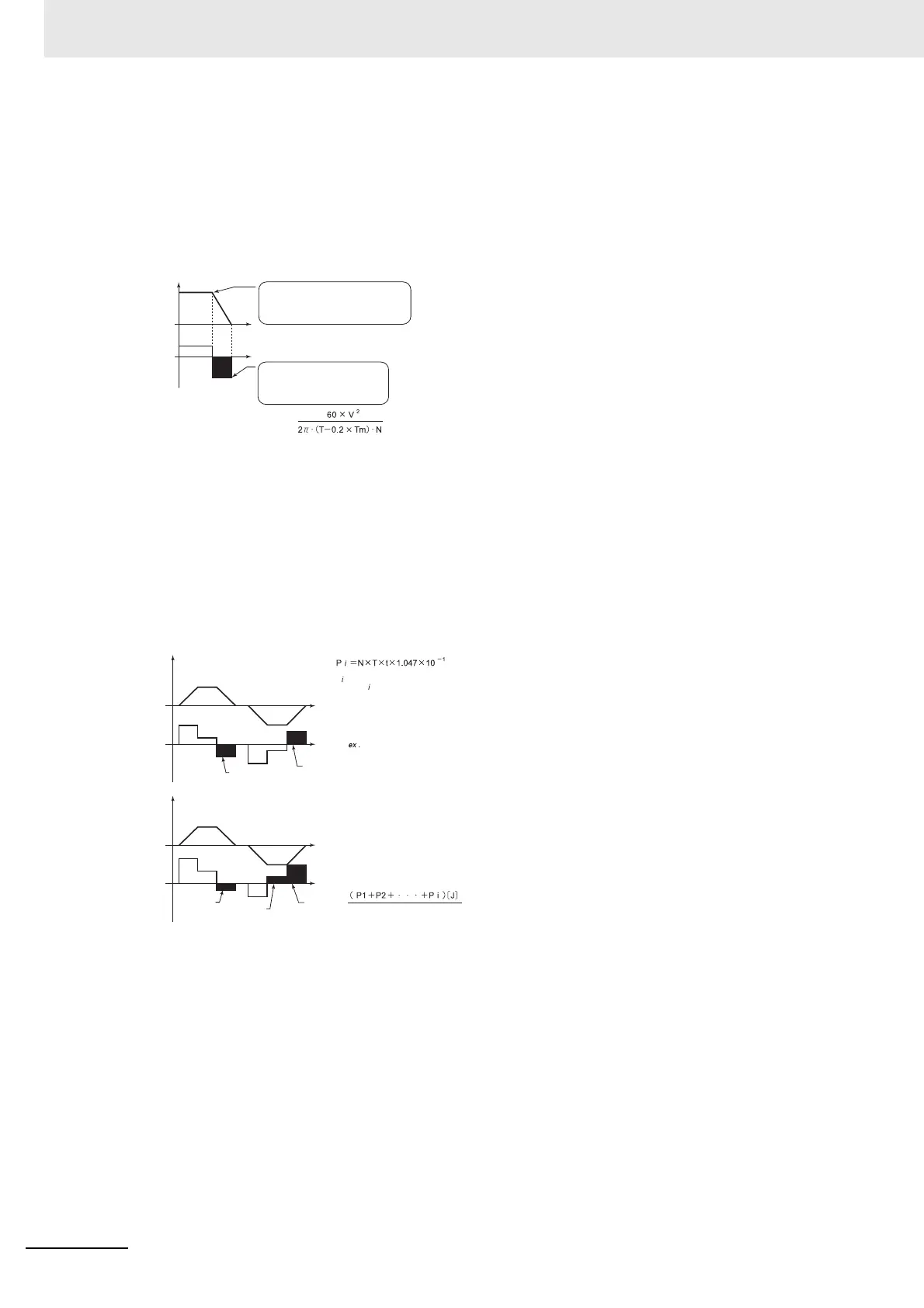